By Robert Michaels, Vice President Technical Sales, Master Bond
Oil and gas are a primary source of energy. In the exploration and extraction of oil and gas, epoxies can be found in most of the equipment used to search, assess, and extract these sources of energy.
In the last 200 years or so, oil and gas have become important sources of energy. The size of the industry is enormous, with production reaching more than 80 million barrels of oil per day and trillions of cubic meters of gas extracted from the earth annually. The oil and gas industry is typically divided into three segments: upstream, midstream and downstream. Upstream is the first stage, the extraction of oil and gas. It involves the search of suitable locations on land, water and even in hostile environments. Once the materials are found, an assessment is made as to the quality and amount that might be present to determine if it is worthwhile to extract it. If this analysis is positive, then the proper method (and there are many) is finalized for the extraction.
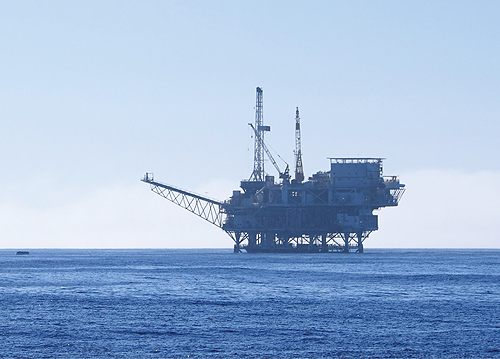
Epoxies have an excellent record of service, providing protection against high pressures, temperatures and corrosion in offshore drilling applications.
Midstream refers to moving and shipping the oil and gas from the area of origin to refineries. The third segment, downstream, is where the oil and gas are processed in refineries into the fuels, oils, plastics and hundreds of other materials necessary for life in the modern day world. Epoxies play a key role in the upstream part of this industry.
Many devices are used in the exploration of oil, all of which use epoxies in some manner. These versatile thermoset materials are used as adhesives, sealants, coatings, encapsulation materials and much more. The physical and electrical insulation properties, temperature and chemical resistance, reliability and relatively straightforward application make epoxies an important contributor to the instruments used in the upstream process. The family of epoxy materials used in oil and gas includes those that offer chemical resistance, particularly to corrosive chemicals.
Epoxies have reliable high temperature resistance exceeding 200°C serviceability. Additionally, they can be formulated to conduct electricity with very low resistance, or they can be formulated to conduct heat while maintaining electrical insulation. In fact, some special epoxies retain high compressive strength at elevated temperatures.
Epoxies have good adhesion capabilities to a variety of substrates. Their adaptability to various extreme service conditions extends to those that offer the capability of cryogenic serviceability. In fact, epoxies are used on platforms as non-skid coating materials and as on-site repair materials.
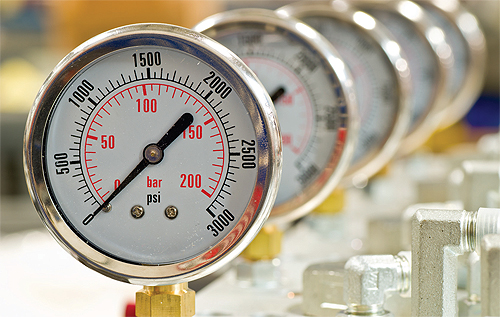
Structural epoxies, along with mechanical reinforcement, play a vital role in proper functioning of pressure gauges.
Where to find epoxies in oil and gas exploration
Most often the search for oil and gas begins with satellite imaging. Epoxies have been traditionally “go to” materials with imaging devices and equipment as they are vacuum compatible, and when needed, optically clear.
Once the images have been analyzed and the potential site chosen, other processes come into play in the exploration phase. For example, in seismic investigation, sound generating devices such as explosives or vibroseis—thumper trucks that drop a weight—generate sound waves to guide experts to areas favorable for finding oil and gas deposits.
In water environments, air guns or plasma sound sources are frequently used. On land, the data are recorded by geophones and in water, by hydrophones. All the measurements are then analyzed by supercomputers that convert the raw data into 3D and 4D (a moving 3D image) images. The sensing and calculation devices all involve complex sensors and controls, and epoxies are used in the bonding, potting and sealing of these components.
Gravity measurements are also indispensable in oil and gas exploration. There are a number of gravimeters that detect abnormalities or variations in gravitational forces, which often suggest the presence of oil and gas. Among the many gravimeters, some use technology based on cryogenics. Epoxies are a primary component in the assembly of these special instruments (gravimeters and magnetometers are often referred to as electronic sniffers). Epoxies serve a variety of critical functions in these complex instruments. They can be formulated to conduct electricity, transfer heat with electrical insulation, resist high and ultra low temperatures, resist chemicals, and cure in either flexible or rigid form.
During exploratory drilling, the next step in the upstream process is the construction of a non-permanent rig to obtain samples for testing the quality and possible quantity of oil. If the site and the test fluids are deemed acceptable, the non-permanent rig will be replaced with a permanent well.
The process in water, particularly deep-sea areas, has some of the same principles that take place on land. However, the equipment must be designed for use in the harsh conditions of aquatic environments. In the offshore exploratory phase, various types of mobile offshore drilling units called MODUs are used on the floor of the body of water. Sonic equipment is frequently used to locate potential sites and the MODUs are used to extract the oil for assessment. If oil is found and deemed to be acceptable in quality and quantity, a permanent production well needs to be prepared.
Often the rigs in watery environments are enormous, some having hundreds of people on them. The depth of the well can be as much as 4,000 feet and beyond. The deep-sea wells must be constructed to withstand the high pressures of underwater drilling as well as harsh climatic and weather conditions.
The oil and gas industry is dynamic and characterized by vibrant growth and new technologies. Some of the more recent developments have been exploration and extraction of gas from tar, sands and shale rock (fracking). These areas contain vast amounts of usable materials, but the technology to mine them is provocative and daring.
Drilling techniques on land and water have become far more sophisticated; this is often referred to as enhanced oil recovery. It often involves horizontal drilling and the use of heat, gas and chemicals to extract additional oil from conventional well sources and to optimize the amounts derived from the newer, less easy-to-access sources.
An overview of some of the epoxy adhesives, sealants, coatings and encapsulants that may be used in the location and retrieval of oil and gas appears in the table.
Please note all epoxy formulations perform markedly better in these applications when post cured at elevated temperatures.
| Epoxies and Other Materials | Type | Cure | Function | Properties | Comment |
| EP17HT-LO | One part epoxy | 300-350°F | Structural adhesive |
High temperature and chemical resistance, low out-gassing | Adhesive for downhole and vacuum applications |
| Supreme 45HTQ | Two part epoxy | 250-300°F | Bonding, potting and sealing | High temperature and chemical resistance, extraordinary compressive strength |
Primarily for downhole applications with severe temperatures, harsh chemicals and high pressures |
| EP62-1 | Two part epoxy | 170-300°F | Bonding and coating | High temperature resistance and top notch chemical resistance, particularly to acids |
Excellent adhesive and coating for challenging downhole conditions |
| EP41S-1 | Two part epoxy | Ambient temperature cure | Adhesive, sealant encapsulant | Chemical resistance, particularly to solvents |
Used primarily for sealing and encapsulating electronics |
| Supreme 10AOHT-LO | One part epoxy | 250-300°F | Bonding and sealing | High temperature resistance, thermally conductive, electrically insulative, low out-gassing |
Primarily for devices when bonding and sealing for heat conduction. Also vacuum compatible |
| Supreme 46HT-2ND2 | Two part epoxy | 300-350°F | Bonding and sealing | High temperature and chemical resistance | For structural and instruments in downhole applications |
| EP29LPSP | Two part epoxy | Room temperature, followed by 135-200°F | Bonding, sealing, coating, and encapsulating |
Cryogenically serviceable, optically clear, low out-gassing |
For cryogenic conditions; LNG and instruments. Also for vacuum and optical clarity |
| Supreme 10HTS | One part epoxy | 250-300°F | Bonding and sealing | Electrically conductive (very low resistance), high temperature service | Instrumentation for ambient and downhole environments. Also vacuum compatible |
| Supreme 11AOHT | Two part epoxy | Ambient temperature cure | Bonding, sealing and coating | High temperature resistance, electrically insulative, excellent heat transfer | Primarily for devices, both downhole and environmental |
| EP121AO | Two part epoxy | 250-350°F | Primarily for encapsulation | High temperature resistance, thermally conductive, electrically insulative |
For equipment and instrumentation for downhole environments |
| UV10TK-LO | Epoxy acrylate | UV curable at 365 nm | Bonding, sealing and coating | Optically clear, high temperature resistant, low outgassing | Analytical instruments, particularly those requiring optical clarity and high-temperature resistance |
| EP36AO | One part epoxy | 300-350°F | Bonding, sealing and encapsulation |
Thermally conductive, electrically insulative, high temperature resistance, excellent toughness |
Can withstand rigorous thermal cycling along with high temperatures. Good fit for downhole instrumentation applications |
| EP21ROK | Two part epoxy | Ambient temperature cure | Coating | Chemically resistant, good toughness and rough finish |
For non-skid coating on surfaces, particularly on larger platforms |
Master Bond Inc.
www.masterbond.com
Filed Under: Adhesives • epoxies, FASTENING • JOINING • locks • latches • pins

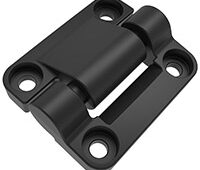

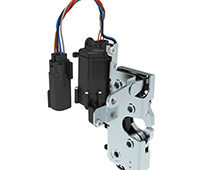
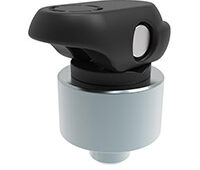
Tell Us What You Think!